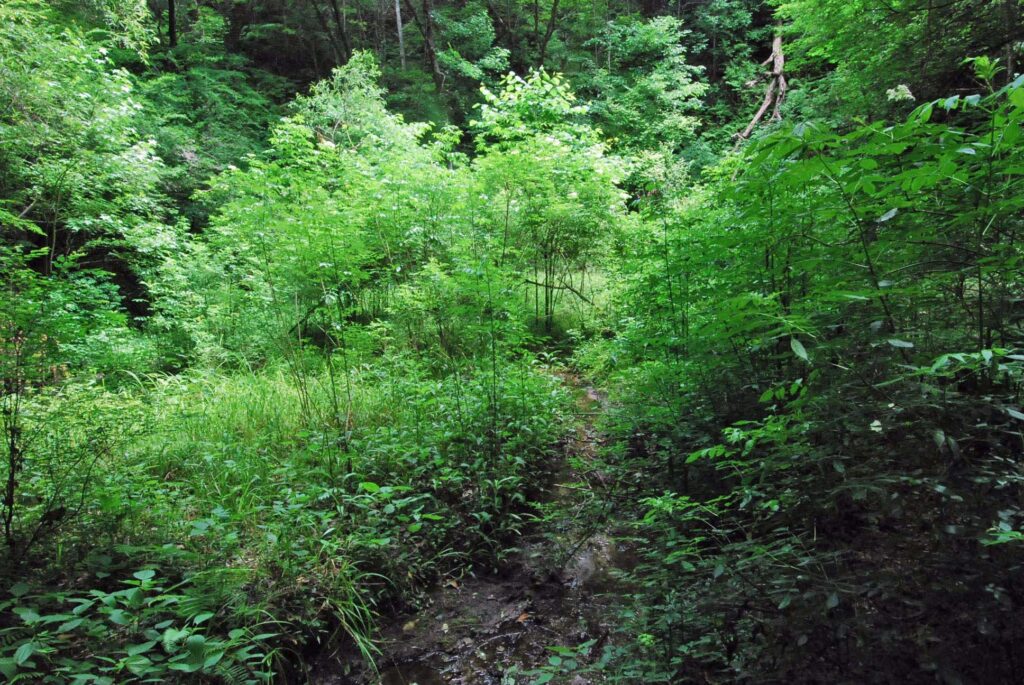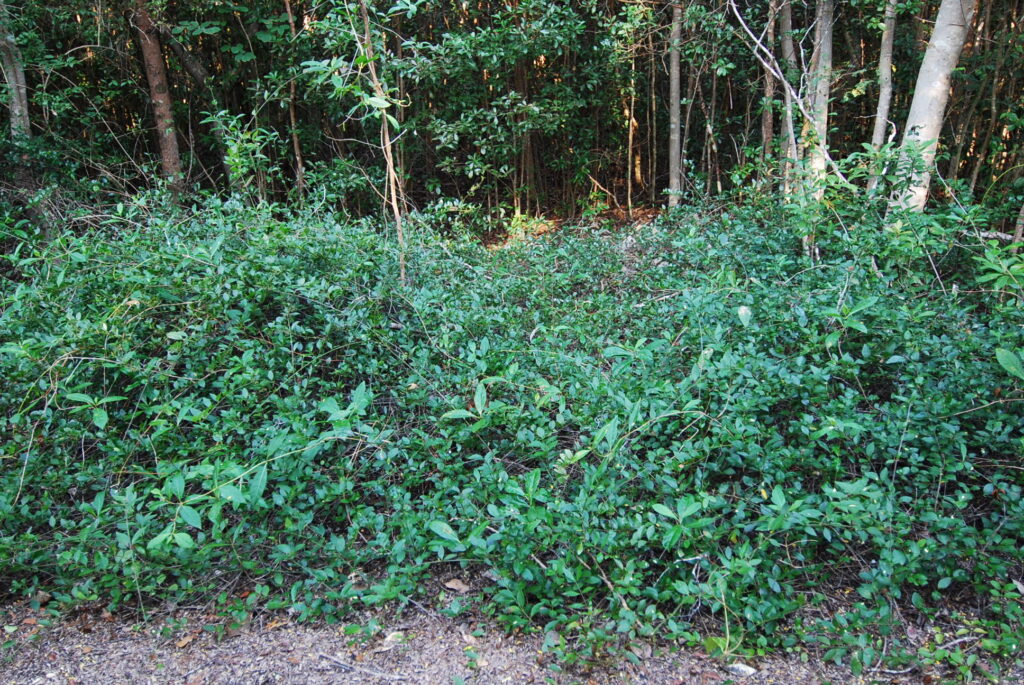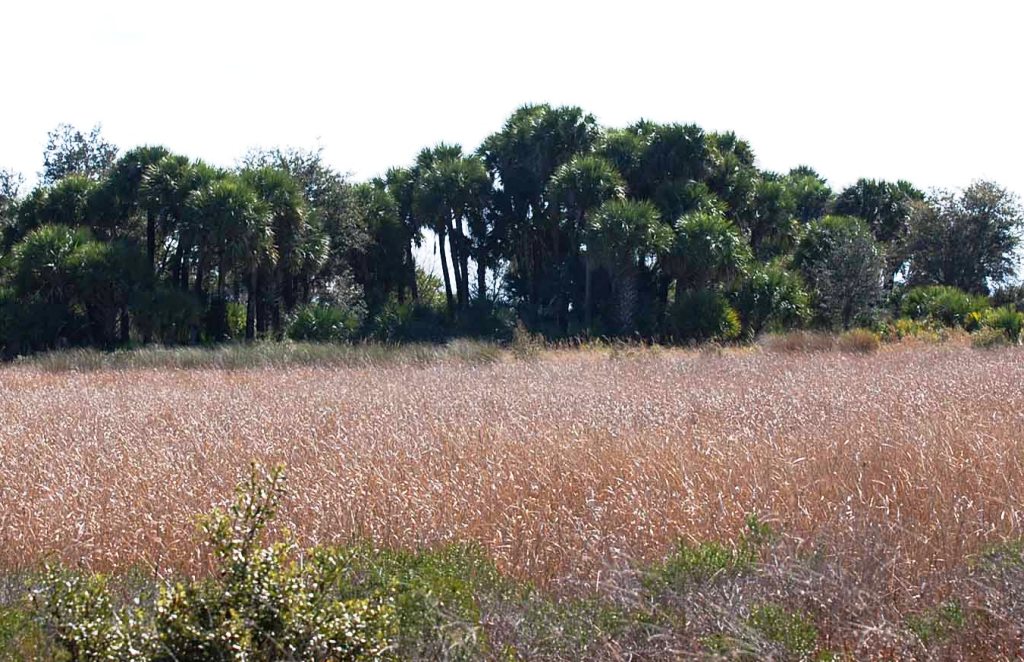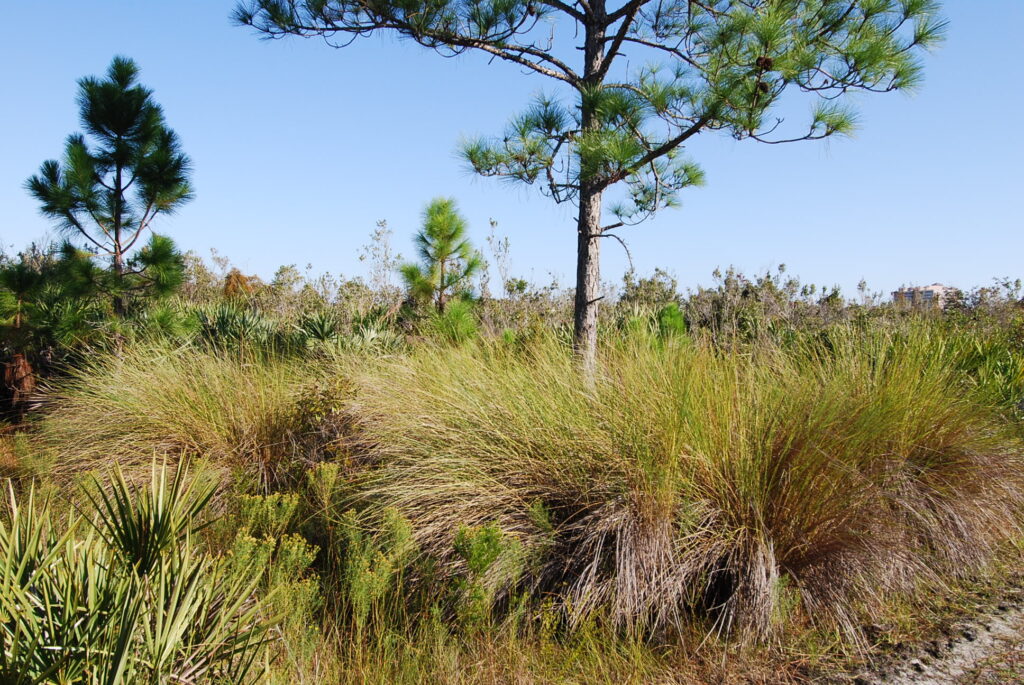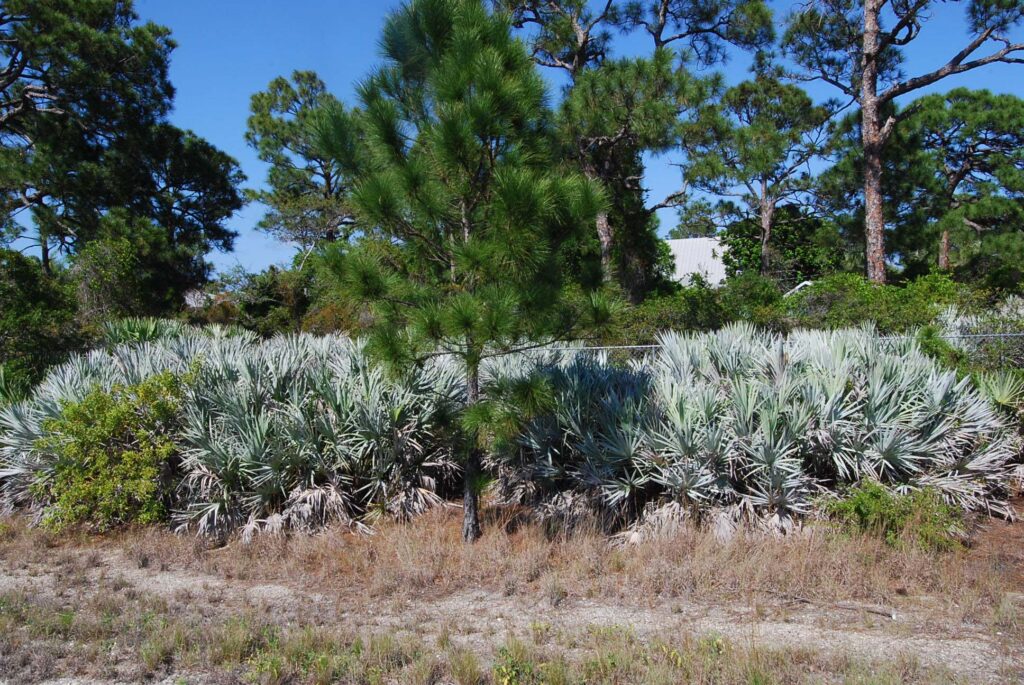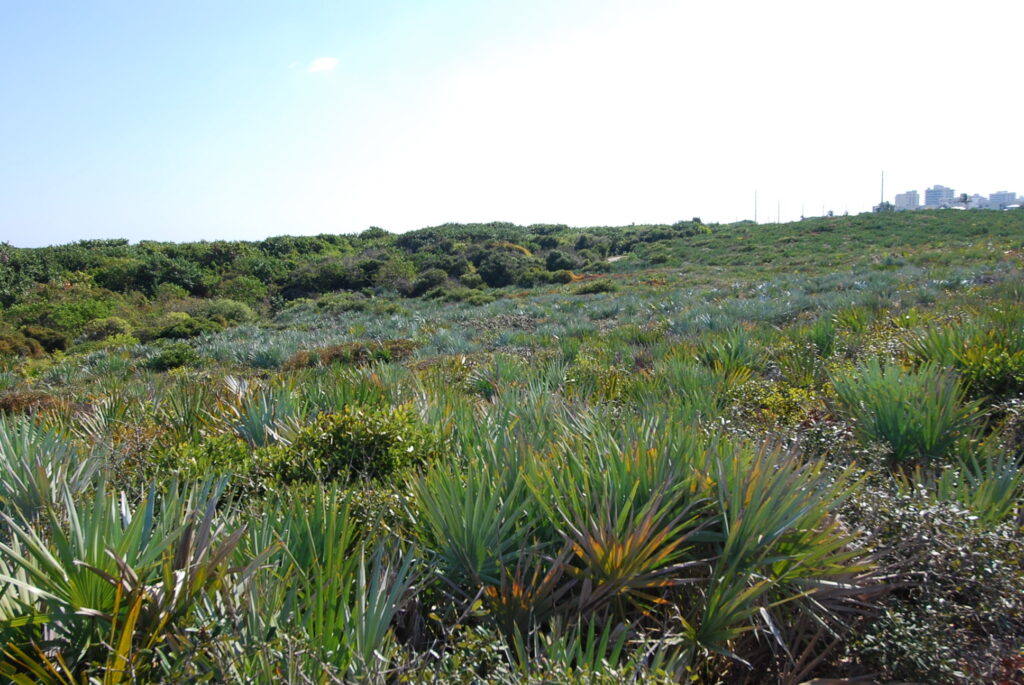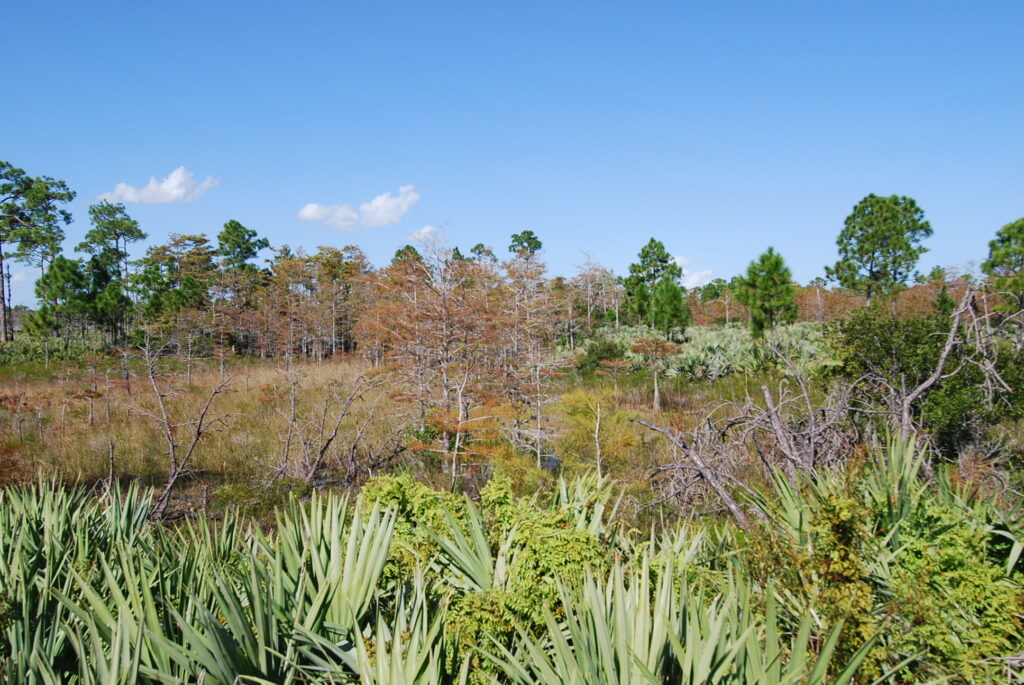Aquacktic Plants Are Great for Ducks And Other Wildlife.
Native aquatic plants are not only beautiful with their yellow, blue, or white flowers, but are also important food sources, nesting sites, and hiding places for shore birds.
To create a low maintenance planting along your lake or pond edge you will need to create shade in order to exclude the ever present population of weeds waiting to move in.
Start with bald or pond cypress, pond apple, red maple, sweetbay magnolia, popash, slash pine and live or laurel oak. Plant these along the edge of the lake where the water won’t stand for more than three days after a heavy rain.
The cypress, popash and pond apple can take long periods with wet feet, but the others will die. Of course, make sure that you frame, and not block the view from living room windows.
Combinations of naturally associated plants will look great and seem to have occurred on their own. I like to combine masses of blue flowered pickerelweed and white flowered crinum lily and duck potato in shallow water.
Also, for shallow water try spikerush to fill in large open areas. Soft stem bulrush and thalia can tolerate up to 3 feet of water depth.
Prairie iris, with it’s blue-green strap-like leaves and large blue flowers in the spring can be mixed with yellow cannas on the upper edge, above the water line, for a stunning affect. Both of these require regular fertilization.
If you are trying to provide good habitat for large mouth bass and other fish, I would suggest that you sprig the underwater pond edge with the grass-like eelgrass.
This will spread under water and provide hiding places for minnows and their young to grow in. Leave some bare areas for the bass to spot and eat these small fish and you will be rewarded with large, fat bass.
The leaves of this plant will only grow about a foot long and will absorb many of the nutrients that wash into the pond. They also keep the invasive hydrilla from taking over by competing for nutrients.
Spring is a good time to plant aquatics. Remember to kill all of the weeds, especially torpedo grass, first. This African grass will always grow back from the grass line so you will need to have regular maintenance to keep it from choking out your planting.
Make sure that there are no grass carp, or muscovy ducks which will eat your plants as you install them. Turtles can eat your plants too, so you may need to put fencing in the water for a few months until the plants grow thick.
Even though these are called aquatic plants, many cannot tolerate being underwater. When we have a heavy rain, the water level will often rise an additional 18 inches and drown an established planting.
I always plant very close to the grass line, even if that means planting in nearly dry soil. You may need to kill some grass in order to provide space for the iris and yellow cannas.
Many of the lake maintenance companies can plant your pond for you and the advantage is that they will be careful not to spray their plants with herbicides.
It is illegal to dig aquatic plants in the wilds without a permit, so please find a reputable landscaper to do the work.
You can hunt around and find a local nursery that grows aquatic plants in pots and increases them by division. This is the most ethical way to obtain them.
If you are bored with the ugly dead zone ringing your pond or lake like a dirty bathtub ring, try planting this area with colorful aquatic plants.
You will frame your view and receive a better view for yourself if your neighbors do the same. Imagine not having to look out across the lake to your neighbors trash bin or other junk stored in his back yard.
It’s also nice to be hidden by pond apple, cypress, thalia and other taller plants so that the neighbor’s dog can’t see you and bark continuously whenever you go out.
This natural stream in the Gainesville, Florida area is lined with native grasses, wildflowers, shrubs like Devil’s Walking stick and many different trees. These include Sweetgum, Hackberry, Red Maple, Florida Elm, Oaks, Pines and others.
Most of these trees grow well in South Florida and can be grouped to create this wonderful effect. You can even make a faux stream with a bed of different sized rocks. Then line it with native grasses, Canna Lily, Prairie Iris, Duck Potato, American Crinum Lily, ferns and others.
A winding path can be the stream as well.
Sea Oxeye Daisy
Borrichia frutescense
This meadow of Silver Sea Oxeye Daisy is growing next to a saltmarsh just west of the dune in Stuart, Florida. Those are mangroves in the background. The soil is moist and salty with other salt tolerant species like Cakile, Salt meadow Cordgrass and Sea Purslane growing with it.
In the drier soils next to this are Dune Sunflower, Beach Verbena, Goats Foot and Seaside Morning glory. When using this plant, keep in mind that it spreads aggressively though underground roots and may need a border to keep it in place.
I have used Sea Lavender to provide a welcoming color and texture to the front landscape of several homes. Soil must be well drained and rich with organic matter.
This is part of a half mile of almost pure Sea Lavender growing on a berm or dune separating the ocean from a salt marsh near Big Pine Key. Other plants nearby include Porterweed, Chapman’s Cassia, Gumbo Limbo, Poisonwood, Bay Cedar, Blolly, Seagrape, numerous salt tolerant grasses and other herbaceous plants.
There are three forms of Snowberry, see post on Snowberry, with this parvifolia species being great as a groundcover. You will find this species in the upper Florida Keys growing in the shade of tall trees.
If this is how nice it looks growing naturally, think of how it will look if trimmed a little.
The September blooming Little Bluestem species dominating this field provides a rare insight into what the prairies of central Florida once looked like. Other bluestem species can provide a similar look to your landscape.
Bordering a natural wetland are Slash Pine, Saw Palmetto, Sand Cordgrass and other wetland species. The soil can be wet to dry when planting Sand Cordgrass, yet it naturally occurs near wetlands. It will die if planted in water.
This grass can occur as individuals or in large masses mixed with Muhlygrass and other grasses and shrubs. On a lake edge, it occurs just before the dry ground begins.
This is a simple combination of Blue Saw Palmetto and Slash Pine in Juno Beach. This could be your front entrance if room permits.
High winds from the ocean nearby sweeping over the Juno Hills Scrub have sheered the vegetation down to just a few feet. This is a unique mix of scrub blending into coastal hammock to the left.
The top of the hill contains Saw Palmetto, Saffron Plum, Hog Plum, various scrub oaks, Scrub Palmetto, Scrub Redbay, Beach Cocoplum and wildflowers and grasses. As you head east to the left, coastal species are added.
These include Necklace Pod, Hercules Club, Wild Lime, Spanish Stopper, Snowberry, Wild coffee, Marlberry, Sea Grape, Blolly, Myrsine, Pineland Croton and others.
For purists like me, this verifies that mixing some of these plants makes sense. Some crossover occurs naturally, such as Saw Palmetto in both habitats, yet Seagrape should stay in the coastal grouping because it crowds out the smaller scrub plants.
This is my favorite picture which includes several natural areas coming together. Here you can see the coarse texture of Saw Palmetto, the medium texture of Slash Pine and the finer textures of Pond Cypress, St. Johns Wort and other wildflowers, sedges and grasses.
The fine texture of Pond Cypress gives the illusion of distance while the Saw Palmetto provides an explosion of form with an outstanding blue color. This can be achieved on a small scale as well such as in retention ponds, lakes and moist areas of the yard.
Too bad more of our lakes and yucky retention ponds aren’t bordered by these beautiful plants. Even our canal banks could be landscaped this way with some creative thinking.
The European Climbing Fern in the front was impossible to avoid.
